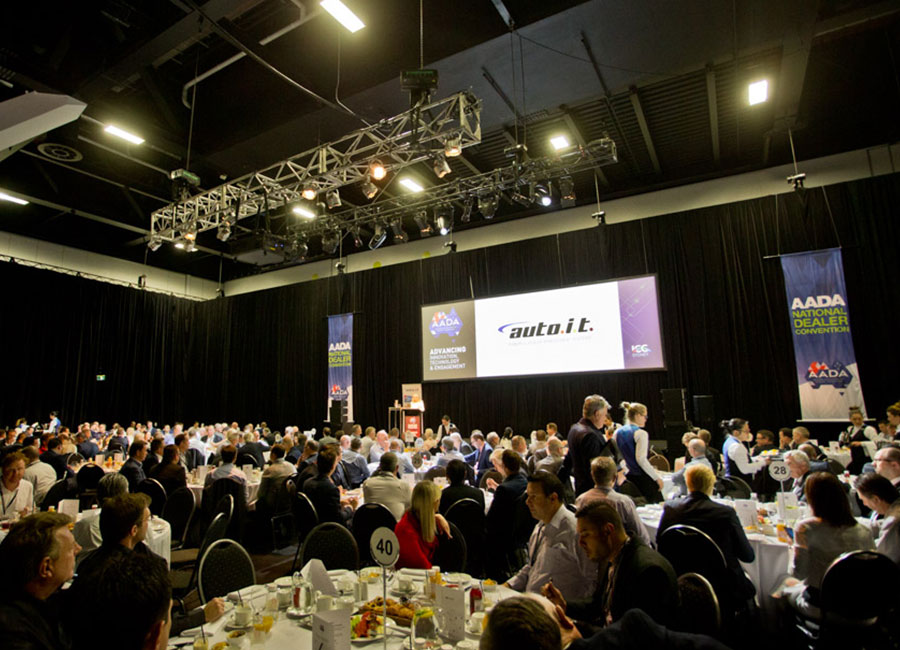
Charles Mills
DESPITE disruption in the automobile industry and some hidden obstacles on the road ahead, retail experience leader Charles Mills is overwhelmingly positive about the future role of dealers, and is adamant that dealers will continue to thrive in the face of disruptive trends.
But Mr Mills, former JD Power vice-president of global retail experience and now senior partner of international customer experience company ROAR, believes that one vital cog in the wheel to success is the dealer’s ability to monetise their relationships with their customers.
Mr Mills was speaking to GoAutoNews Premium from Los Angeles before his presentation at the 2018 AADA Convention and Expo which will be held at the Gold Coast Convention and Exhibition Centre from September 3 to 5.
He will be discussing how dealers will be able to insulate themselves from the many disruptive changes in the way cars are sold, financed and used by ensuring their customers are locked-on to the dealership.
“We continue to underestimate the value of an individual relationship but the problem is that maximising the relationships requires consistency in treating customers as individuals.”
Mr Mills said that the current climate of smaller transaction amounts meant dealers had to search for any additional revenue and that “the only way to increase revenues and profits is to have great customer relations that lead to more transactions with the same customer”.
“Data shows that a strong dealer-customer relationship leads to more money over the life of that customer.
“If they’re inconsistent, they give the customer a reason to look elsewhere. That’s the problem – it reduces their opportunity to maximise their income.
“We have some great dealers who treat their customers in the same way as a person visiting their local restaurant or pub – they know the customers so well and treat them in a way that they’re part of the family.”
Mr Mills said that this relationship could be expected in some of the regional centres and smaller towns because dealers often mix with their customers in their private lives, but astute dealers were using the same approach even in the larger dealerships in the bigger cities.

“They are using technology much better to create the tighter relationship even though they have relatively large carparcs of, say, 10,000 customers in their dealership,” he said.
“We talk a lot about having technology to provide the basis for people to have conversations.
“Here’s an example: When service advisors greet customers, they will know what that customer – we’ll call him John – last had done at the workshop. They know they had the oil changed, that the car had its 15,000km service, but they may not know what the customer’s attitude was to that last service.
“So we try to give that information to that service advisor to let them know that, (a) John didn’t have such a great experience last time and you’re very lucky he’s back, and (b) you should take care of him because last time he had to wait too long and he had to repeat the information that he gave when he made the appointment on the phone, so make sure you don’t do these things again with John.
“Having the technology at the service advisors’ fingertips will allow them to know who the customer is and what he is there for, and also that information on the fact that the dealer didn’t do the job he asked them to do last time and he wasn’t pleased so the dealer needs to take better care of him and focus on the areas that were sensitive to him last time.”
Mr Mills said the information on the customer is available throughout the dealership so all staff who relate to that customer are aware of his history – good and bad.
“We need to make information around John more a part of the process so that the conversation is less about the transaction and more about the relationship,” he said.
“We are a big believer in the centralising of the service process, so that if a brand or a dealership group has multiple outlets, then customers need only contact one point to be booked for a service, or to have a part ordered, or to test drive a car or buy a car.
“This can free up the individual dealer from a cost perspective or a manpower perspective to build a greater relationship with the customer.”
The centralised contact point is being used by Honda in New Zealand, Pendragon in the UK, and also Lookers in the UK as well, Mr Mills said. It can be as simple as one phone number for all departments and all dealerships.

ROAR also does employee engagement checks, one of which is to see how the dealership employee feels about the workplace and if he or she feels empowered to achieve the goals.
That check is in response to poor global staff turnover rates in car dealerships.
While Mr Mills concedes that the turnover rate is better now than a few years ago, it is still around 40-50 per cent.
“Previously, some dealers have reported up to 90 per cent turnover. We believe that dealers have to keep the rate below 30 per cent.
“If we are talking about monetising relationships, people are a critical part of that. We’ve been advocating for management to play a very strong role in promoting the relationship with the customer.
“But the reality is that the lay personnel are the ones dealing with the customers and if they’re having a large turnover, then that’s going to hurt the relationship.
“For that reason, you have got to keep the turnover below 25-30 per cent and unfortunately, we are not seeing that.
“Having the same staff (at dealerships) shows the customer that you are to be trusted and that you have the customer’s interests at heart and then the customer feels secure in telling his friends about that dealership.”
Mr Mills said that ROAR is in the business of enabling relationships.
“It’s not CRM. It’s about helping the dealer get closer to the customer so they are able to help the customer more beginning from when the customer is a sales lead,” he said.

ROAR has the capacity to show dealership staff the dollar value and the network of friends or associates that each customer brings to the dealership, Mr Mills said.
“That could be about collecting more information about what that customer could be worth over the lifetime of the vehicle as a means of compelling the dealership staff to take better care of the customer.
“It’s important that it’s not just the size of the dollars but to realise that this customer may have a base of hundreds of LinkedIn associates who may hear that the dealership does a great job or, alternatively, doesn’t do a good job. Treat him as an opportunity to leverage the dealer network.”
Mr Mills said that as part of ROAR’s business, it provides its clients with detailed information on a customer’s social media usage.
“This is so the dealer has a better understanding of (a) who this customer is and (b) that this customer doesn’t represent just his transaction but potentially all of his (social media) network.”
Mr Mills said ROAR follows the customer journey, looking at all the touch points from filling in a form that states their interest in a vehicle, all the way through to an intention to repurchase, service needs and so on; right through the seven years of ownership.
“Every single touch point you can imagine, we are there,” he said.
“That’s through surveys, social media, and so on. We are always trying to understand where that owner’s mind is at regarding the brand and the dealership.
“Is this customer still having a strong relationship with the dealer or not; and if they’re not, what is the level of risk and how does that dealer undo that risk and get them back on the right path.”
ROAR also focuses on working with sales managers to get them to understand that the customer is far more valuable than the individual transaction.

“So we’re showing them that John could be worth, say, $562,000 over the five years because he has an incredible network of LinkedIn and social network associates and has a high level of advocacy based on Twitter and other forms of communication.
“The algorithms that we are using are essentially trying to let the dealership know that this is a real customer who has a propensity to purchase and that this customer represents more than this single transaction to the dealership, with far greater potential to the dealership over the next five years.
“I can tell you that this is worth a lot of money to the dealer so it is very important to do the right thing and create a great experience for the customer.”
Mr Mills, who was with JD Power for 25 years after coming to the firm from Nissan USA, said he had been visiting dealerships for 26 years and working with sales and service departments.
“That was to try and create an experience for the customer while making the dealership money and make the customer happy. As cliched as it sounds, the ‘win-win’ truly does work and we have the data to support it.”
He said that his presentation in Australia is about the inter-relationship with the customer, and without this relationship, the dealer will lose.
“It is there for the dealer to lose,” he said.
“If the dealer builds a strong relationship with the customer then they will give the dealer the first shot to support their mobility needs.
“I will be sharing with the Australian audience the data we have collected about mobility and the future and what the customers think of the changes ahead.
“I will tell you now that the dealers that have the most rock-solid relationships with their customers will be the ones who will be able to convince the customers to stay with them through the mobility services changes ahead.
“The data tells us that the customers will even give those dealers the chance to go beyond what the dealer was used to providing and be open to what the dealer may deliver next.”
By John Mellor and Neil Dowling













 Read More: Related articles
Read More: Related articles

